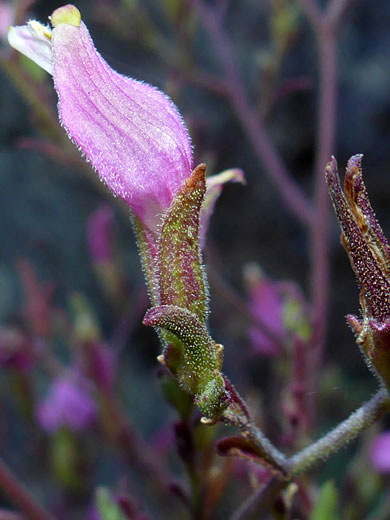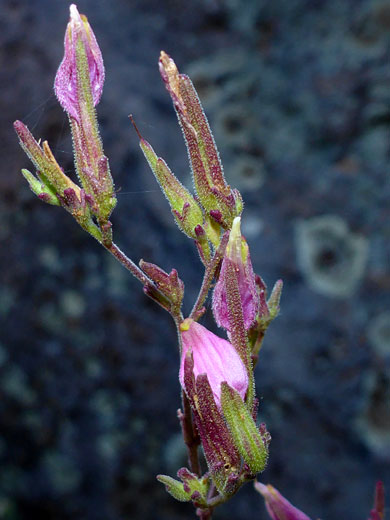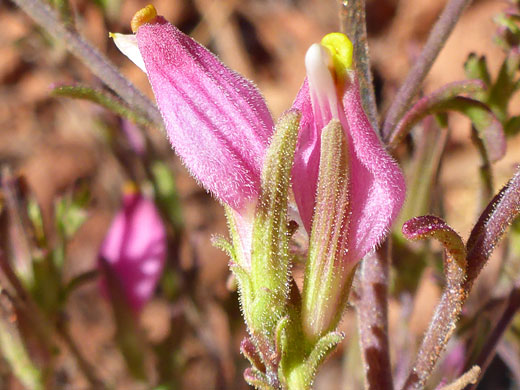Cordylanthus Parviflorus, Small-Flowered Bird's Beak
Plants > Wildflowers > Orobanchaceae > Cordylanthus Parviflorus

Cordylanthus parviflorus (small-flowered bird's beak), Left Fork of North Creek, Zion National Park, Utah
Common names:
Small-flowered bird's beak, purple bird's beak
Family:
Scientific name:
Cordylanthus parviflorus
Main flower color:
Range:
South Nevada, central and northwest Arizona, and south Utah, plus a small area of California, and far north Utah/south Idaho
Height:
Up to 2 feet
Habitat:
Pinyon-juniper and Joshua tree woodland, sagebrush, rocky places; up to 7,000 feet
Leaves:
Linear, up to one inch long; with lobed (proximal) or unlobed (distal) margins
Season:
August to October
Leaves, stems and bracts of cordylanthus parviflorus have a covering of short,sticky, glandular hairs, mixed with longer, non-glandular hairs. Upper stem leaves are entire, while those towards the base are three-lobed.
The inflorescence is an open cluster, its branches topped by solitary or paired flowers, each subtended by one narrowly lanceolate outer bract (less often two), which, like the leaves, is three-lobed, and also an unlobed inner bract. Bracts are often purplish. The sheath-like calyx is divided to the base into two lobes, partially enclosing the pink/purple corolla, which has two lips, the lower much smaller than the (pouched) upper. The corolla lips are crossed by darker veins. The lower lip is whitish at the tip. The greenish-yellow stigma is slightly exserted.
The inflorescence is an open cluster, its branches topped by solitary or paired flowers, each subtended by one narrowly lanceolate outer bract (less often two), which, like the leaves, is three-lobed, and also an unlobed inner bract. Bracts are often purplish. The sheath-like calyx is divided to the base into two lobes, partially enclosing the pink/purple corolla, which has two lips, the lower much smaller than the (pouched) upper. The corolla lips are crossed by darker veins. The lower lip is whitish at the tip. The greenish-yellow stigma is slightly exserted.
All Contents © Copyright The American Southwest | Comments and Questions | Contribute | Site Map




